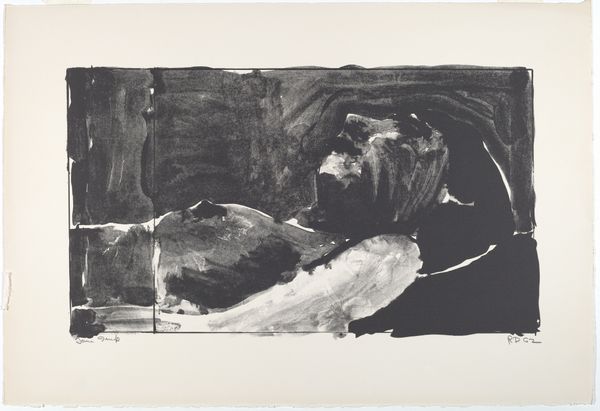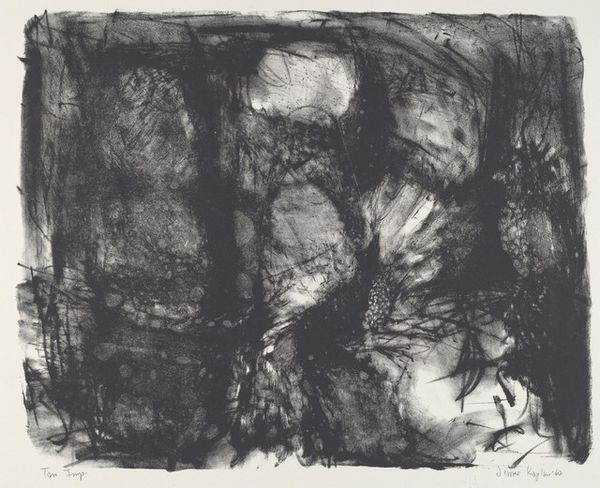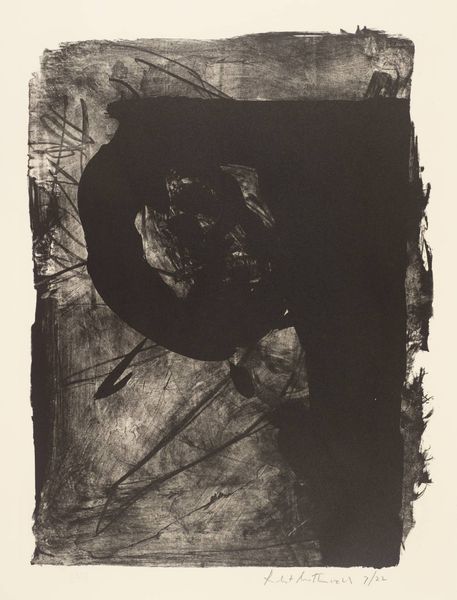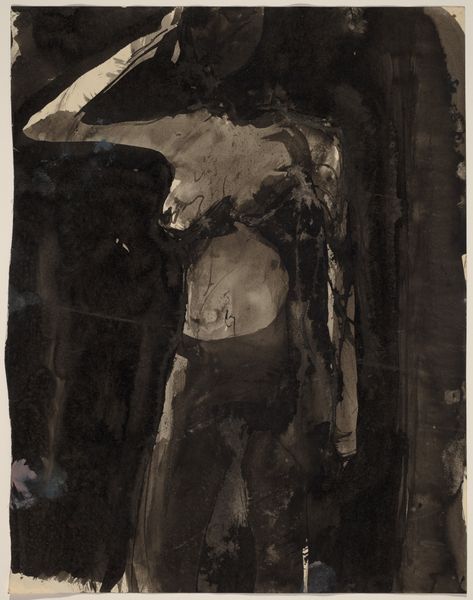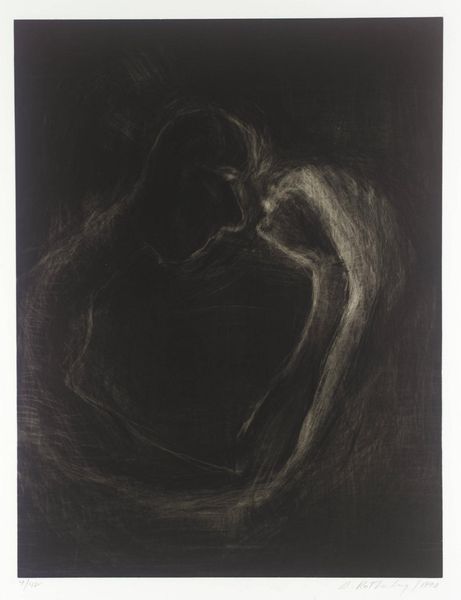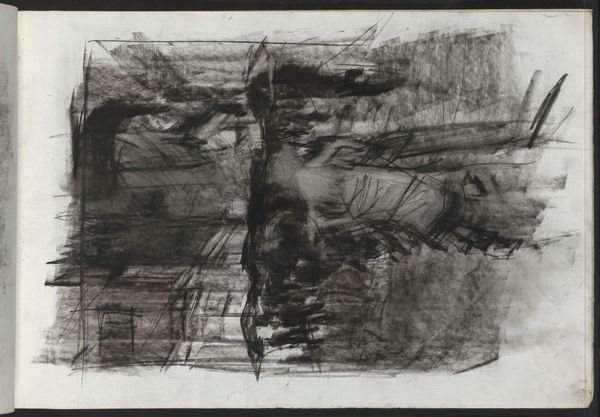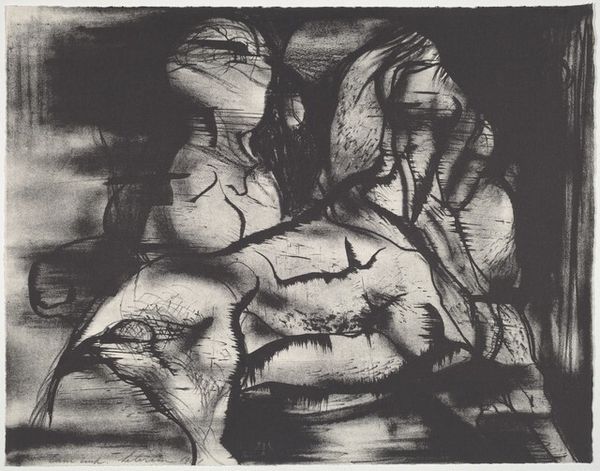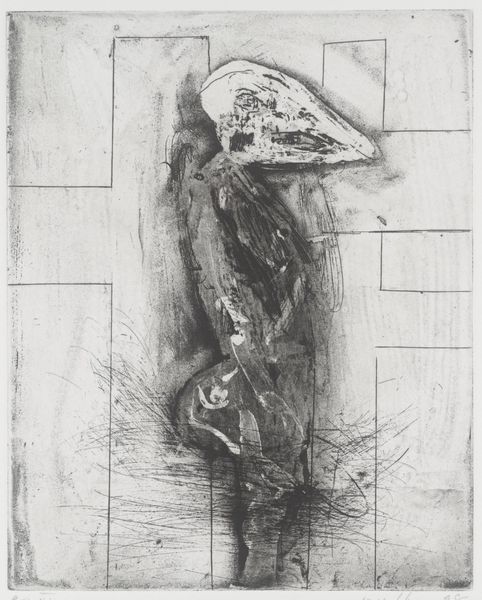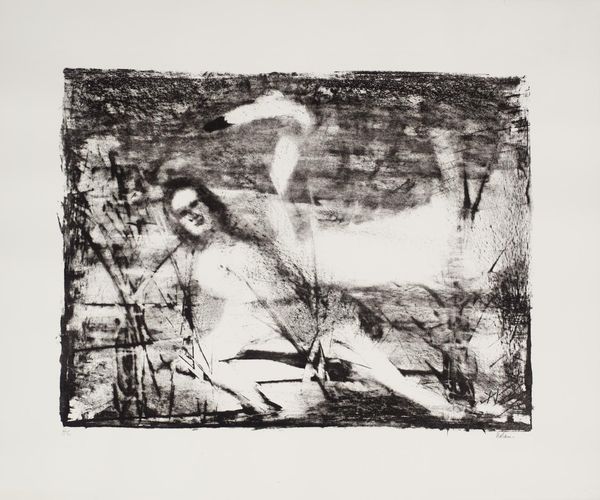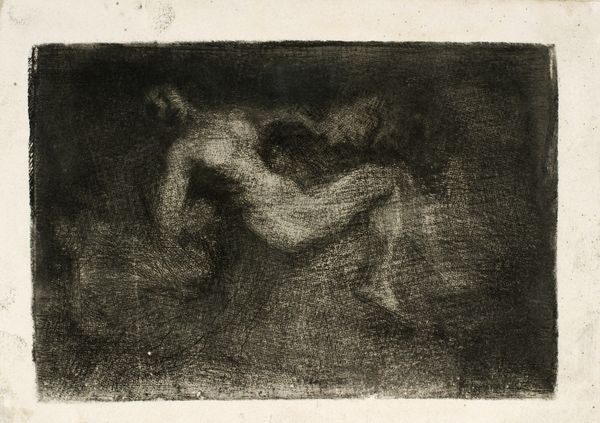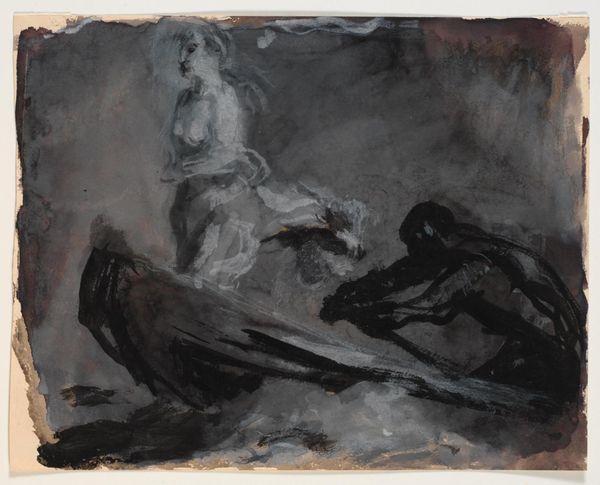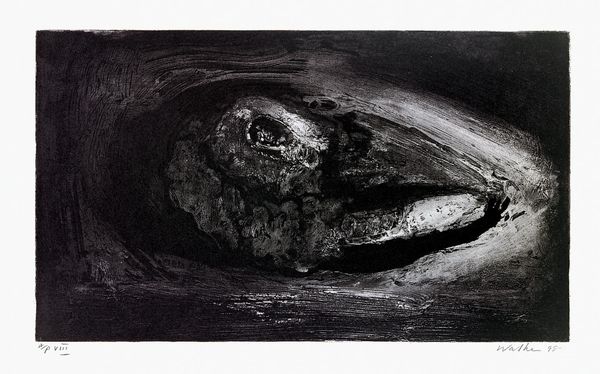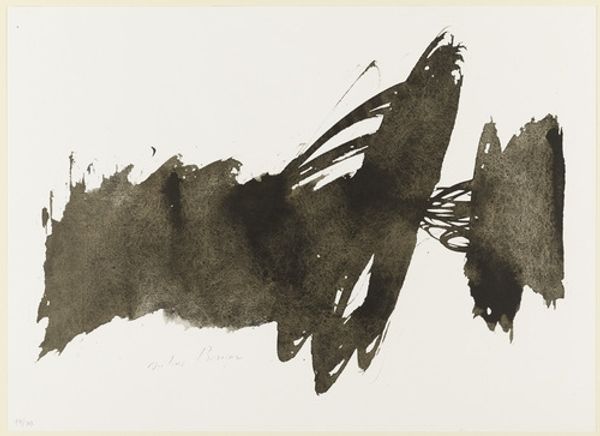
#
light pencil work
#
pale palette
# print
#
pencil sketch
#
light coloured
#
incomplete sketchy
#
bay-area-figurative-movement
#
organic drawing style
#
ink drawing experimentation
#
pen-ink sketch
#
sketchbook drawing
#
fantasy sketch
Dimensions: plate: 22.54 × 30 cm (8 7/8 × 11 13/16 in.) sheet: 39.21 × 56.83 cm (15 7/16 × 22 3/8 in.)
Copyright: National Gallery of Art: CC0 1.0
Curator: Well, this is "Untitled" by Nathan Oliveira, a print from 1973. My initial thought is how indicative it is of its time—that raw, immediate, experimental feel of the '70s. Editor: Ooh, moody. I get this sense of vulnerability and maybe a little bit of existential dread. It's stark, almost a negative image, which amplifies the isolation I feel radiating off the subject. Curator: The beauty of a print like this lies in the process. The method allowed Oliveira to produce multiple nearly identical images, thus rendering art ownership much more democratic. It’s also intriguing, I think, to consider the historical context of such imagery. Editor: Democratic indeed! But there's also a haunting quality to the marks, like ghosts caught on the page. It reminds me of Bacon, in a strange way— the distortion, the feeling that the figure is fighting to hold itself together. Is that printmaking or alchemy? Curator: That comparison to Bacon is spot on. Think about how Cold War anxieties influenced the art world, shaping an interest in expressing anxieties through the distortion of the human form. Oliveira’s work, along with other Bay Area figurative artists, was also reacting to the dominance of abstract expressionism by reasserting the importance of figuration in art. Editor: And look how the light works. It’s not exactly light, it's like absence of dark. Like, what haunts her the most are the parts she leaves blank? You can't stop thinking what might fit into the spaces he hasn't colored. I find that very telling. Curator: Absolutely, Oliveira uses light not as an illuminating force, but as a spectral echo. That ethereality you perceive makes the image deeply symbolic, prompting us to contemplate both individual identity and broader social anxieties around existential themes and uncertainties in American society during this era. Editor: That makes a lot of sense when you bring the cultural conditions of the '70s to bear on it. But regardless, that "incomplete, sketchy" rendering gives it all a sensation of temporal urgency, as if we’re viewing a scene the artist caught from the corner of his eye while dreaming... A beautiful sketch of anxieties made permanent. Curator: Yes, the fusion of a timeless medium and immediate mark-making invites endless conversations. It really captures an era of profound cultural and political introspection through a unique lens, inviting endless speculation. Editor: Definitely gives us lots to think about. A fine end note to our musings.
Comments
No comments
Be the first to comment and join the conversation on the ultimate creative platform.
